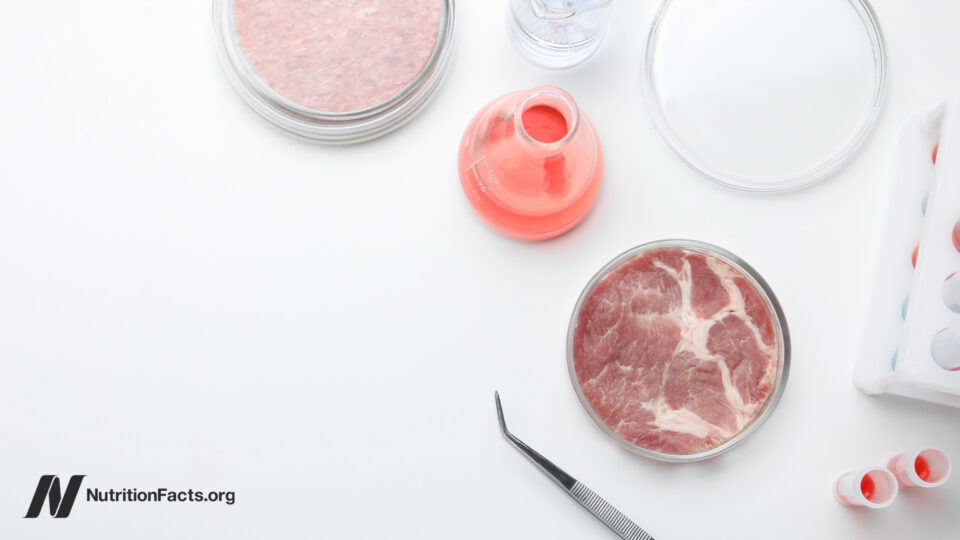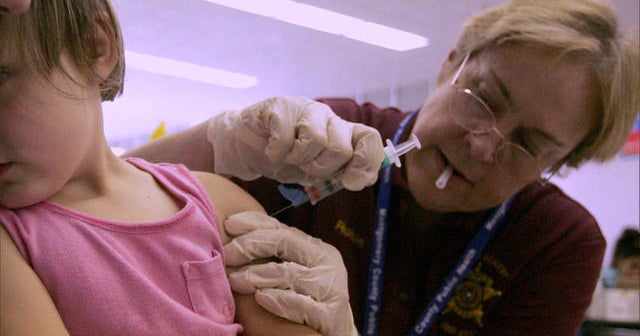More than 95 percent of human exposure to industrial pollutants like dioxins and PCBs comes from fish, other meat, and dairy.
By cultivating muscle meat directly, without associated organs like intestines, the incidence of foodborne diseases “could be significantly reduced,” as could exposure to antibiotics, “pesticides, arsenic, dioxins, and hormones associated with conventional meat.” Currently, the U.S. Food and Drug Administration has approved seven hormone drugs to bulk up the production of milk and meat. “In the European Union, there exists a total ban on such use,” however. Even without injected hormones, though, animal products naturally have hormones because they come from animals. “Eggs, example given, contribute more to the dietary intake of estradiol [estrogens] than beef, whether the animal is legally treated with hormones or not.” After all, eggs come straight from a hen’s ovaries, so, of course, they’re swimming with hormones. But if you’re directly growing just muscle meat or egg white protein, you don’t need to include reproductive organs, adrenal glands, or any of the associated hormones.
“Chemical safety is another concern for meat produced under current production systems.” There are chemical toxicants and industrial pollutants that build up in the food chain, such as pesticides, PCBs, heavy metals, and flame retardants, but there is no food chain with cultivated meat. We could produce all the tuna we wanted, with zero mercury.
When the World Health Organization determined that processed meat was a known human carcinogen and unprocessed meat a probable human carcinogen, it wasn’t even talking about the carcinogenic environmental pollutants. When researchers tested retail meat for the presence of “33 chemicals with calculated carcinogenic potential,” like polycyclic aromatic hydrocarbons (PAHs), organochlorine pesticides like DDT, and dioxin-like PCBs, they concluded that, in order to reduce the risk of cancer, we should limit beef, pork, or chicken consumption to a maximum of five servings a month.
Why cultivate meat at all when you can just buy organic? Surprisingly, “consumption of organic meat does not diminish the carcinogenic potential associated with the intake of persistent organic pollutants (POPs).” A number of studies have recently compared the presence of environmental contaminants in organic meat versus conventional meat, and the researchers found, surprisingly, that organic meat was sometimes more contaminated. Not only organic beef either. Higher levels were also found in pork and poultry.
If you look at the micropollutants and chemical residues in both organic and conventional meat, several environmental contaminants, including dioxins, PCBs, lead, and arsenic, were measured at significantly higher levels in the organic samples. As you can see below and at 2:56 in my video, The Human Health Effects of Cultivated Meat: Chemical Safety, the green is organic meat, and the blue is conventional.
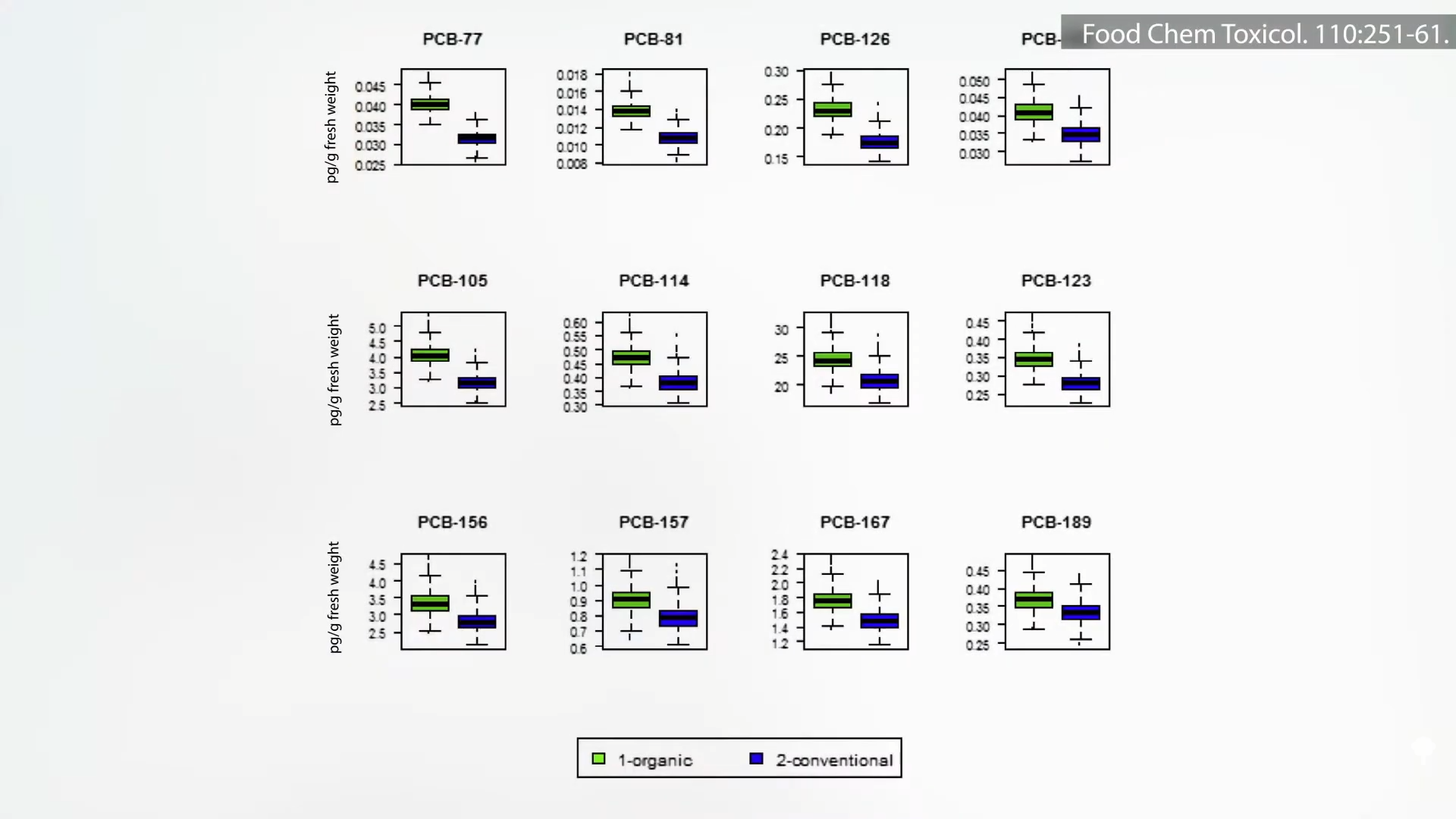
Cooking helps to draw off some of the fat where the PCBs are concentrated, as shown here and at 3:01.
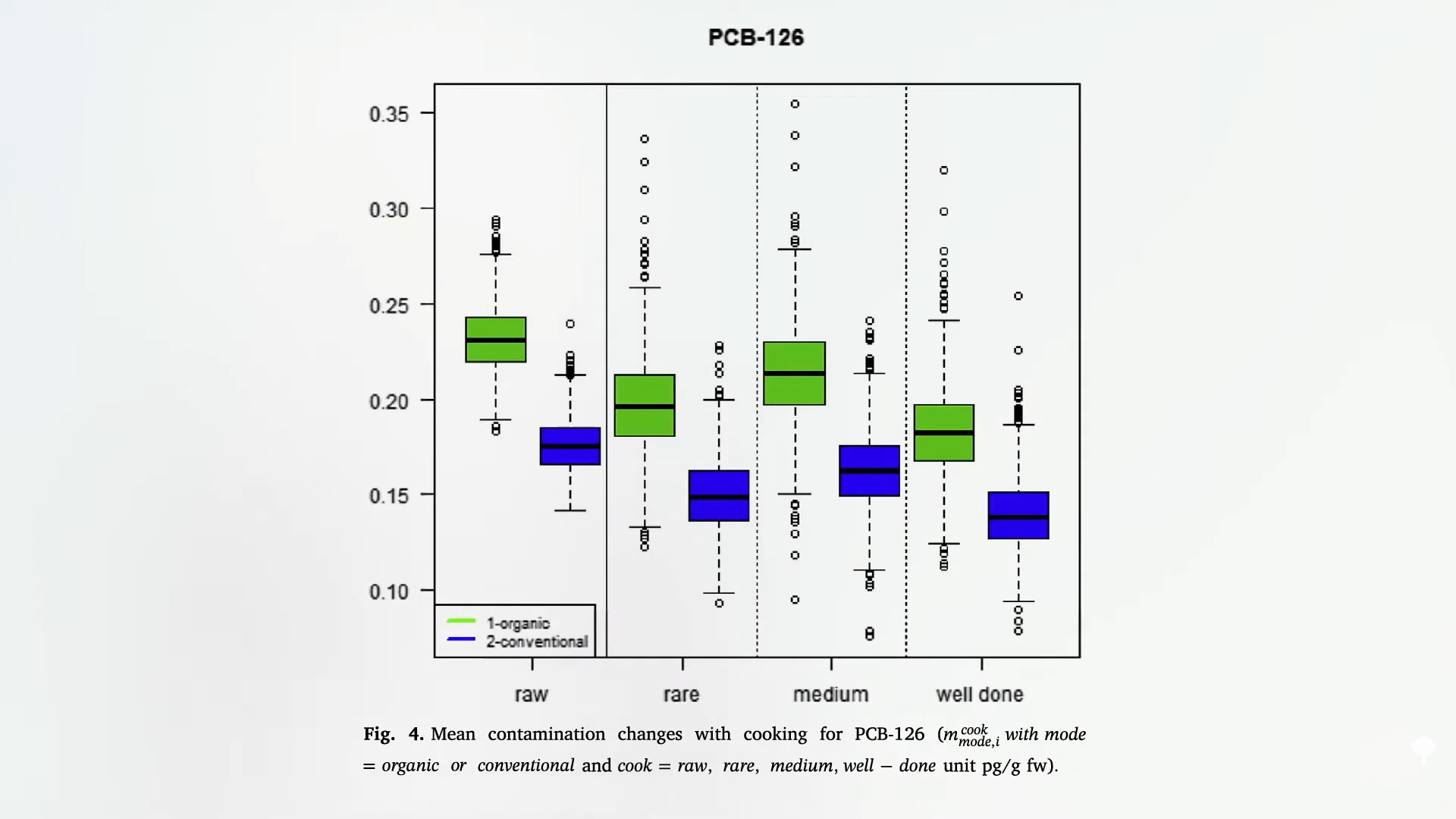
Seafood seems to be an exception. Steaming, for example, generally increases contaminant levels, increasing contaminant exposure and concentrating mercury levels as much as 47 percent, as you can see here and at 3:15 in my video. Better not to have toxic buildup in the first place.
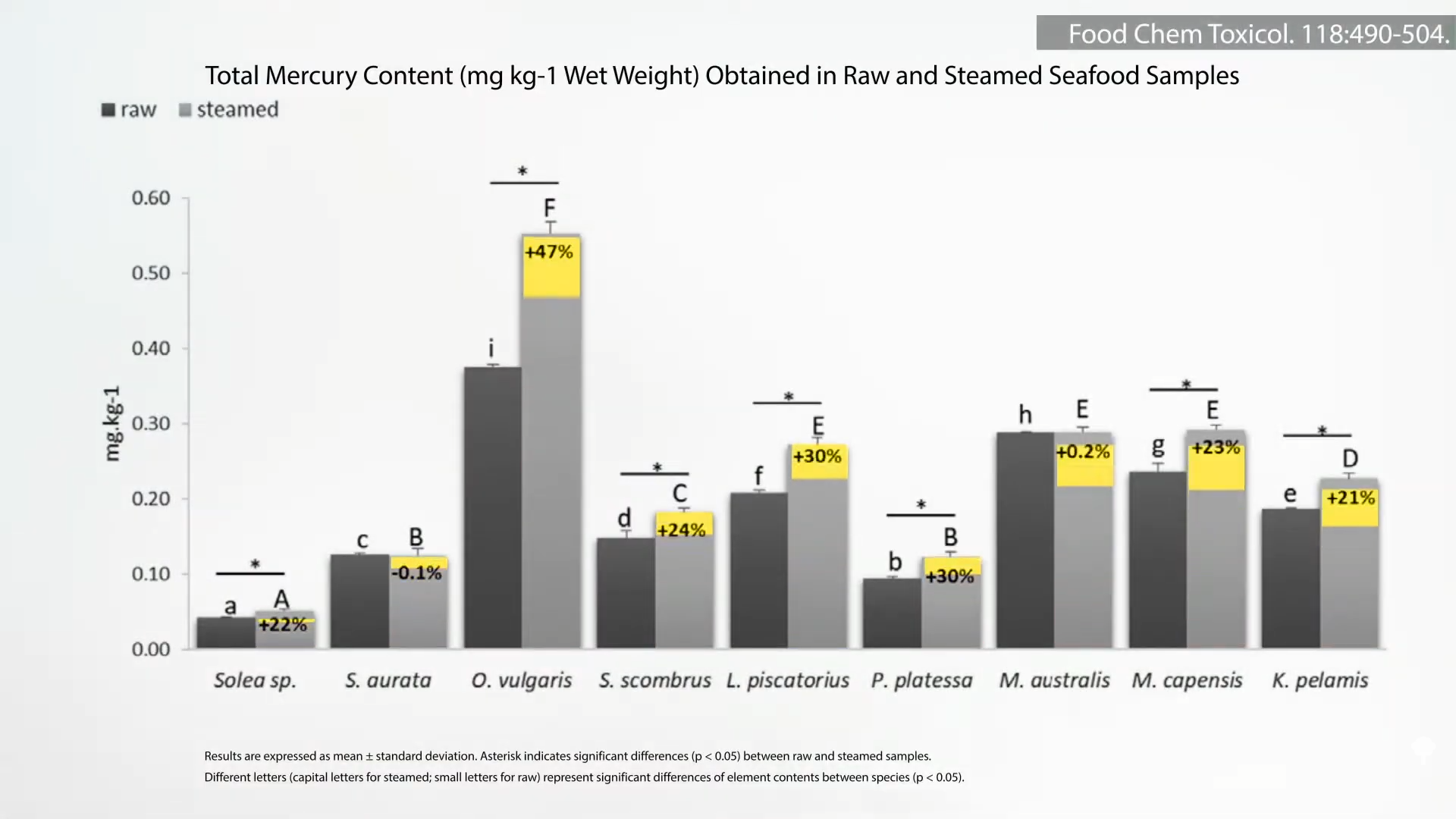
More than 95 percent of human exposure to industrial pollutants like dioxins and PCBs comes from foods like meat, including fatty fish, and dairy, but the pollutants don’t appear magically. The only way the chicken, fish, and other meat lead to human exposure is because the animals themselves built up a lifetime of exposure in our polluted world, from incinerators, power plants, sewer sludge, and on and on, as you can see here and at 3:40 in my video.
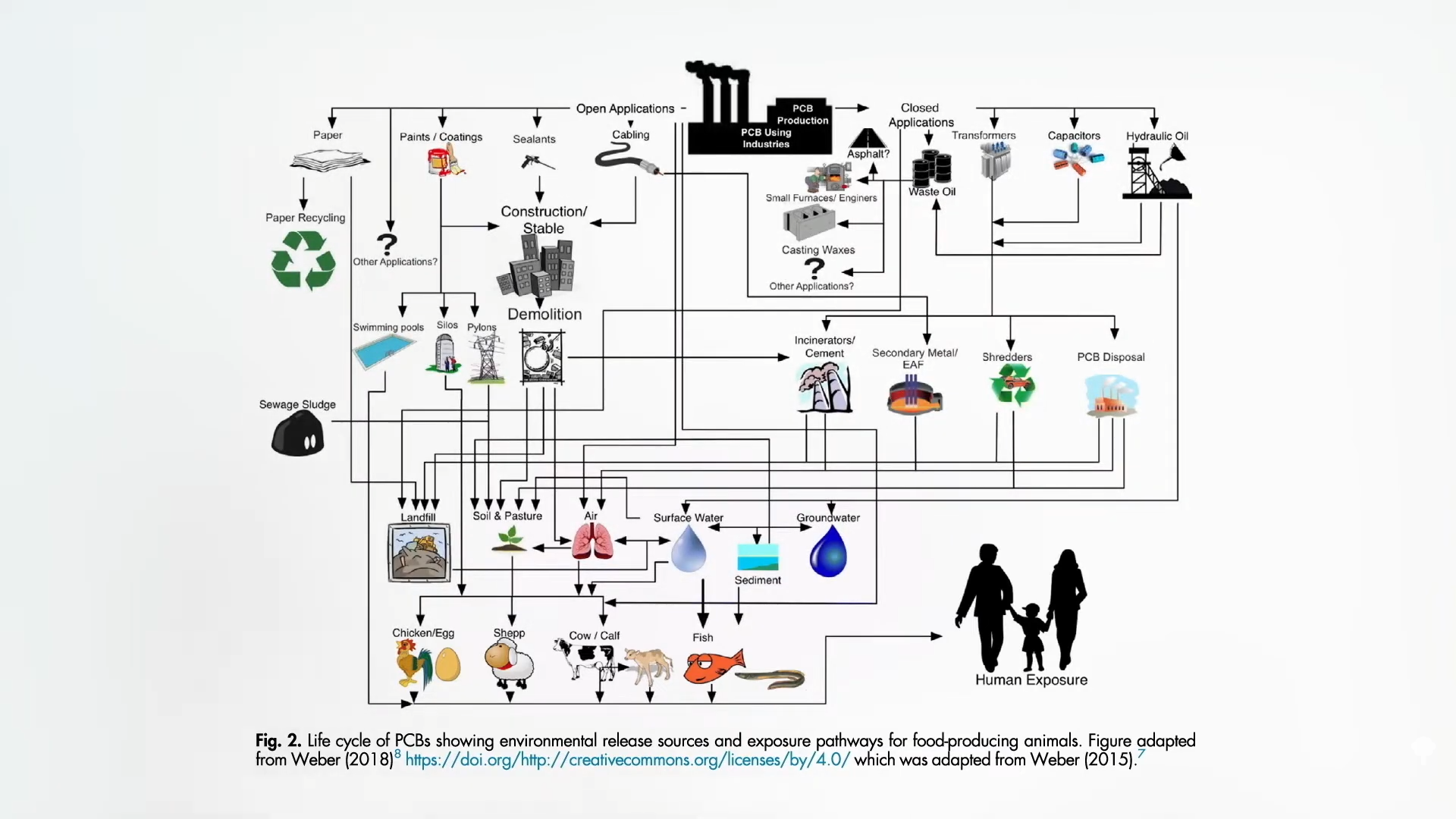
Unlike conventional meat production, a slaughter-free harvest would not only mean no more infected animals, but no more contaminated animals either. In terms of pollutants, it would be like taking a time machine back before the Industrial Revolution.
Doctor’s Note:
Cultivated meat means less contamination with fecal residues, toxic pollutants, antibiotics, and hormones; up to 99 percent less environmental impact; and zero pandemic risk. Cultivated meat allows people to have their meat and eat it, too, without affecting the rest of us.
This is the final video in this cultivated meat series. If you missed the first two, check out the videos on Food Safety and Antibiotic Resistance.
I previously did a video series on plant-based meats; see the related posts below.
All videos in the plant-based meat series are also available in a digital download from a webinar I did. SeeThe Human Health Implications of Plant-Based and Cultivated Meat for Pandemic Prevention and Climate Mitigation.











